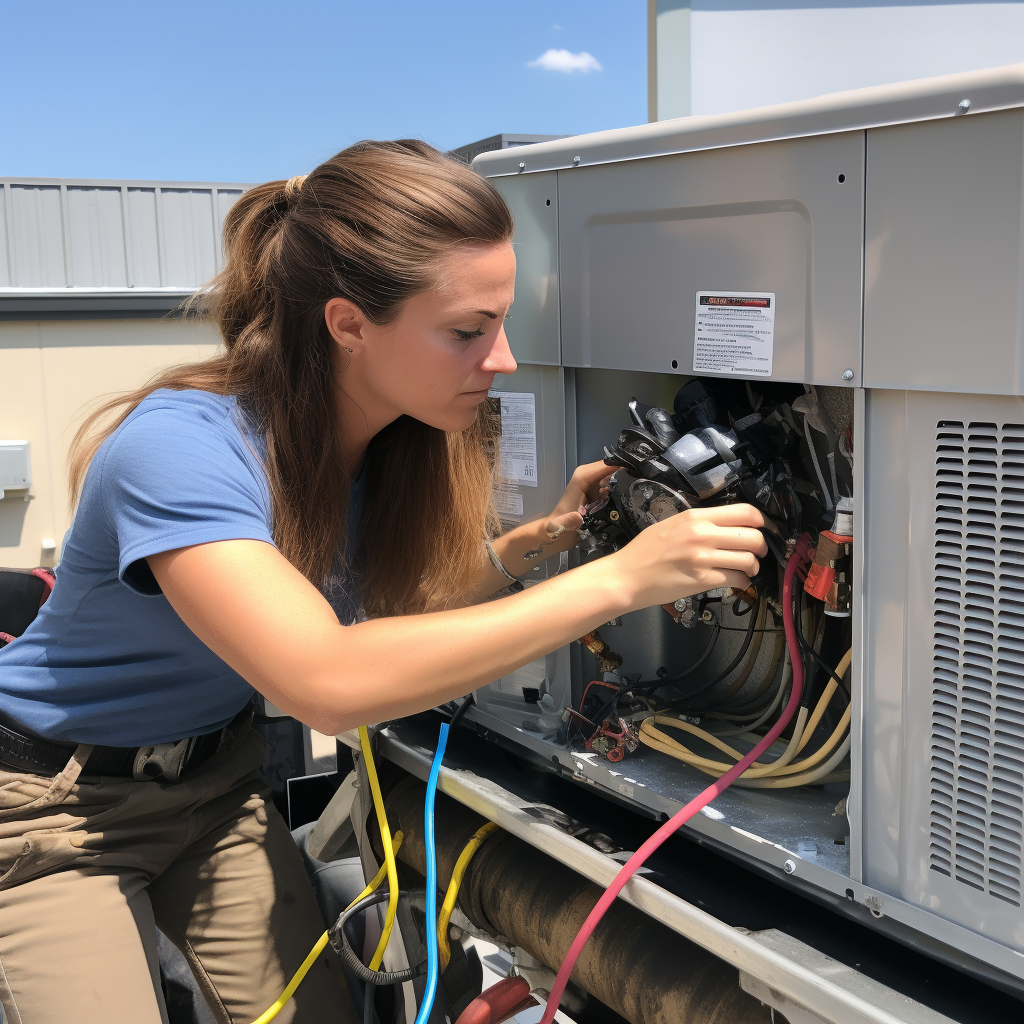Optimizing energy usage is absolutely critical for businesses striving for sustainability; there's no doubt about it.
But this can be increasingly difficult without that little nudge of extra guidance. So, what can you do to take the path to a greener future?
Well, implementing a commercial energy audit checklist is an excellent way toward energy efficiency and significant cost savings.
Free commercial energy audit checklist
The benefits of a commercial energy audit are quite significant as it's a proven way to help businesses:
- Identify their energy usage
- Uncover potential savings, and
- Implement targeted strategies for improvement.
With that said, conducting an energy audit an be a challenge. For one, it requires a thorough examination of your facility, energy systems, and consumption patterns (among other things).
However, you can remove that pain somewhat by using our free commercial building energy audits checklist.
To further support your energy-saving initiatives, we offer personalized consultation with a professional energy expert.
Fill out the contact form below to schedule a conversation with one of our energy auditors.
By understanding your specific needs and goals, we can help you maximize the effectiveness of your energy audit and significantly reduce your energy bills:
Take the First Step to Energy Efficiency
What should a commercial building energy audit include?
Even if you don't decide to take advantage of our own energy audit report and checklist, you need to know the key elements (both internal and external) that a checklist should include when dealing with energy audits for commercial buildings:
Energy Consumption Analysis
The first thing to look at when you energy audit commercial buildings is your energy consumption pattern. This analysis involves a detailed review of your utility bills over a specified period, usually a year. It calculates:
- Total amount of energy consumed
- Peak demand times, and
- Seasonal variations
Understanding these patterns will not only help identify any unusual patterns or spikes in energy usage, but also help pin down the most energy-intensive operations.
This serves as the basis for further investigation and the development of targeted strategies, steering your company towards becoming more energy efficient.
For example, is there a space in the building that uses more energy than it should? Are there different times of the day when electrical use rises sharply?
Simply knowing these things can help managers in your organisation develop useful strategies for energy conservation and identify areas of energy waste.
Moreover, there are green energy grants for small businesses available in most states to support companies that want to improve their energy efficiency, which is all the more reason to assess your energy consumption and make an investment towards an energy-efficient future.
Building Envelope Assessment
The building envelope refers to the physical barrier between the conditioned and unconditioned environment of a building, including the resistance to air, water, heat, and noise transfer.
An efficient building envelope can significantly cut down your current energy cost.
In a building envelope assessment, you'll want to evaluate the following aspects:
- Insulation: Check for any inadequacies in the insulation of walls, ceilings, roofs, and floors. Poor insulation can lead to significant heat loss or gain, thus increasing energy consumption.
- Windows and Doors: Any issues like broken seals, single-glazed windows, or gaps can lead to unnecessary energy loss.
- Air Leakage: This could be around windows, doors, or even cracks in the walls and can significantly impact heating and cooling costs.
- Roofing Material: Certain materials can absorb more heat, leading to higher cooling costs during the summer months.
HVAC System Evaluation
Heating, ventilation, and air conditioning (HVAC) systems are a significant contributor to a building's energy consumption. Therefore, an in-depth inspection and analysis of these systems are crucial to an effective energy audit.
Consider the following factors:
- System Efficiency: Assess the overall efficiency of your system from air filters to motors and compressors. Older systems tend to be less energy-efficient and may need to be upgraded.
- Maintenance: Regular maintenance is key to ensuring your HVAC system runs efficiently. Check for regular, scheduled maintenance and any necessary repairs.
- System Sizing: HVAC systems that are improperly sized — either too large or too small for your building — can lead to energy wastage.
- Thermostat Settings: Ensure thermostats are appropriately programmed for optimal energy use.
- Ductwork: Inspect ductwork for leaks or blockages that can decrease system efficiency.

Lighting System Assessment
Lighting systems represent a substantial proportion of energy consumption in commercial buildings, making them a critical focus point in any energy audit.
An effective lighting system not only reduces energy costs but also enhances the comfort and productivity of your building's occupants.
In a commercial lighting audit, consider the following factors:
- Types of Lighting: Traditional incandescent light bulbs consume more energy than modern, energy-efficient LEDs.
- Lighting Controls: Check if your building is equipped with lighting controls like automatic dimmers, occupancy sensors, or timers that can help reduce energy waste.
- Light Levels: Ensure that the light levels in your building are adequate for the tasks performed. "Overlighting" can lead to unnecessary energy consumption.
- Maintenance: Regular cleaning of wiring and lighting fixtures and the timely replacement of faulty bulbs can significantly improve efficiency.
- Daylight Utilization: Where possible, take advantage of natural light, which can reduce the need for artificial lighting during the day.
With the above factors in mind, you can make life easier for yourself and work with a commercial lighting company to ensure that you have the right type of lighting and controls for your building.
As one of the top lighting as a service providers, FES Lighting can help you design and implement your lighting upgrade along with energy management software solutions to continually monitor and control your lighting system.
With our no-capital, pay-per-use model, we will match your energy savings to cover the monthly cost of the service. Think of it as an asset that that is sure to pay for itself in the long run!
Water System Inspection
Water systems in commercial buildings can also contribute significantly to energy consumption. Thus, a thorough inspection of these systems is a vital component of any energy audit:
- Water Heating: Older, inefficient systems could be a drain to a building's source of energy. Consider upgrading to a more efficient system, or look into alternative solutions, such as solar water heating.
- Bathroom Fixtures: Check the flow rates of bathroom fixtures like faucets, showers, and toilets. High flow rates can lead to unnecessary water and energy waste. Installing aerators or low-flow fixtures can help save both water and energy.
- Leaks: Even minor leaks can lead to significant water and energy waste over time. Ensure that any found leaks are repaired promptly.
- Insulation: Proper insulation can prevent heat loss from hot water pipes and condensation on cold water pipes.
- Water Usage: Identifying excessive water use can help you develop strategies to reduce water waste and, therefore, energy consumption.

Download Our Energy Auditing Checklist
To assist you in your energy auditing process and provide actionable insights, we've created a downloadable energy audit template.
This worksheet is designed to guide you through each step of the audit, ensuring that no stone is left unturned when it comes to identifying opportunities for energy savings in your commercial building.
More importantly, this audit allows you to better understand energy needs and reduce carbon footprint.
Take the First Step to Energy Efficiency
Looking for a home energy audit checklist PDF?
We understand that some of our visitors might be seeking assistance for residential energy audits.
We sincerely apologize for any inconvenience, but our specialization lies primarily with commercial energy audits. However, we want to ensure that you get the help you need!
For those of you searching for a comprehensive guide for a home energy audit, we highly recommend visiting Home Efficiency Guide’s DIY Free Home Energy Audit.
This resource provides a step-by-step, easy-to-follow process for assessing your home's energy use, helping you identify potential savings and enhance the efficiency of your household.


%20(1).png?width=1080&height=1080&name=FES-Ebook-1%20(1)%20(1).png)